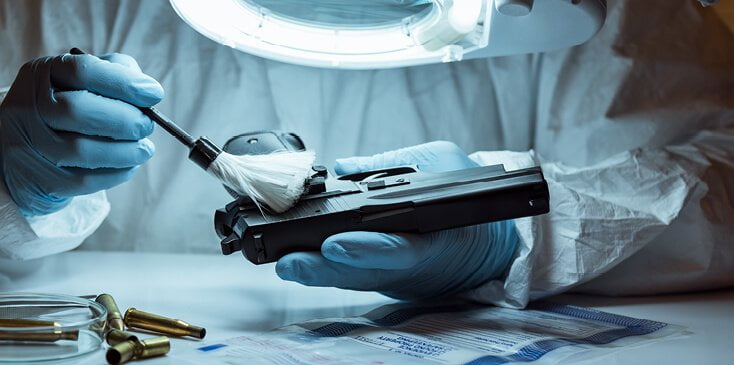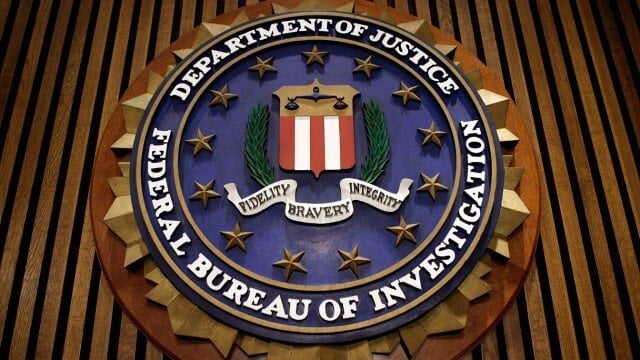Forensics: exact science or dramatised fiction? #12

It often happens in many walks of life that if something has lingered on for a long time, people tend to think that it must be correct. In other words, age tends to impart an impression of wisdom and that’s how old people have a tendency of throwing their weight around that whatever they are saying must be given weight. The business of fingerprint matching falls in exactly this category.
Simply because the technique has been in use for nearly 140 years, it has come to be regarded as infallible in popular perception, whereas it is not. The simple fact is that like the comparison of bullets that we have discussed earlier, fingerprint matching is also carried out by humans and hence is subject to the same errors and uncertainties.
This myth has gained more currency since the introduction of the AFIS (Automated Fingerprint Identification System) for the simple reason that people do not understand the AFIS and think that something being automatic means that it is necessarily correct. In an AFIS search, the software compares an unknown print to a database of maybe millions of known prints.
The result of an AFIS search produces a shortlist of about 10 potential matches. A human fingerprint examiner then takes the shortlist of possible matches and performs an old-style comparison. Please remember that the stored images are of those people who have had a brush with the law earlier and their fingerprints were taken. This means that the entire business of fingerprint matching cannot work for a first offender.
Fingerprints are not to be found everywhere
Fingerprints are formed by the deposition of the natural oils and other secretions that are present on our fingers transferring onto that surface. Fingerprints are formed better on non-porous surfaces like glass, painted or varnished surfaces, plastic moulded surfaces, etc. However, they are also more susceptible to damage or erasure because they are on the outermost surface. On porous surfaces, they are absorbed to some extent into the substrate and hence are less susceptible to damage. If the substrate is textured, they present the problem of incomplete contact between the friction ridge skin and the surface being touched. This results in fingerprints being discontinuous and lacking fine detail when developed.
Fingerprints are ‘lifted’ from nonporous surfaces by cyanoacrylate (superglue) fuming, dye stains, powders, and vacuum metal deposition. For porous surfaces amino acid techniques are useful. Other techniques include various fluorescence techniques such as ultraviolet illumination, iodine, ninhydrin, silver nitrate, small particle reagents, and vacuum metal deposition (gold and zinc).
Those who are enthused by fingerprints, forget that wearing gloves defeats the business of fingerprints for all practical purposes. There is something called glove print that can be lifted but their evidentiary value is severely limited. One hundred forty years ago, in an era when cheap latex, rubber, plastic, vinyl or nitrile gloves were not common, police officers and forensic technicians were so excited by this discovery that they plumped for it. Now that almost every criminal can afford to buy not one but scores of gloves before committing a crime, people still imagine that the scene of the crime would be littered with fingerprints.

Far from being a science
The business of fingerprinting presumes that each fingerprint is unique. This is in spite of the fact that there are no databases to utilize for a statistical projection to determine the existence in the general population of an identical ‘match’.
For any technique to acquire the status of a ‘proven science’, it must necessarily be backed by a body of peer-reviewed, published studies establishing their scientific bases, determination of sources of variability and potential bias, and ‘methodological rigour, openness, and cautious interpretation of data’. The National Academy of Sciences report that we discussed earlier, categorically states that such research is lacking in most of the forensic disciplines including fingerprint matching that rely on subjective assessments of matching characteristics.
Most significantly, those peddlers of forensic techniques who wrongly claim ‘individualization of evidence’ to the exclusion of all other possible sources, never understand that determination of uniqueness requires measurements of object attributes, data collected on the population frequency of variation in these attributes, testing of attribute independence, and calculations of the probability that different objects share a common set of observable attributes.
No scientific validation
The National Academy of Sciences Committee cited the works of J. J. Koehler and Haber and Haber who pointed out the lack of scientific validation of fingerprint identification methods. S.A. Cole and R. Epstein also show that there is no scientific foundation of the fingerprint field. M.A. Berger and D. L. Faigman et al independently point out that there is no empirical validation of the underlying theory. J. L. Mnookin notes that there is no validity testing, and there is no statistically valid model of fingerprinting. Above all, there are no validated standards for declaring a match. She concludes that claims of absolute, certain confidence in identification are unjustified, the product of hubris more than established knowledge.

Fingerprint matching and proof of complicity in a crime are two different things
Mere presence of fingerprints on a place or their ‘matching’ does not prove anything and the basic police investigative arguments must still be applied to find corroborative evidence. Suppose the suspect in a murder or rape case was known to the victim or suppose they were earlier living together. It is quite possible that his fingerprints could be found on articles belonging to the deceased, such as spectacles, mobiles, mirrors, glasses, etc. in the normal course of events. There is nothing to prove that the prints were impressed in the course of the alleged offence.
For example, a salesman might have visited some house and might have been offered a glass of water. Neighbours might have even seen him going inside the house. His fingerprints would be there on the glass. A couple of hours later, a crime might be committed there by somebody else and he might have taken care not to leave any fingerprint. Will you implicate the innocent salesman on the basis of the fingerprint alone? Hence, fingerprints must be viewed in the light of circumstantial evidence.
In People v. Gomes, the Illinois Supreme Court clearly held that to support a conviction, fingerprint evidence must satisfy both physical and temporal proximity criteria. The fingerprints must have been found in the immediate vicinity of the crime and under such circumstances that they could have been made only at the time the crime occurred.
Unfortunately, the police would not raise such questions because they work with a prejudiced mind. Investigation in Indian is not a search to arrive at the truth; it is merely an exercise in padding up a preconceived notion. As far as the defence lawyers are concerned, they simply do not know such things. In India, they find someone’s fingerprint at the scene of the crime and that is all they need to convict him, no further questions asked. In the end, justice gets murdered.
How contextual bias of examiners undermines their results
That contextual bias exists and affects results was very forcefully proven by I.E. Dror et al. In their experiment, experienced fingerprint examiners were asked to analyse fingerprints that, unknown to them, they had analysed previously in their careers. For half the examinations, contextual biasing was introduced. For example, the instructions accompanying the latent prints included information such as the ‘suspect confessed to the crime’ or the ‘suspect was in police custody at the time of the crime’. In six of the 24 examinations that included contextual manipulation, the examiners reached conclusions that were consistent with the biasing information and different from the results they had reached when examining the same prints in their daily work.

Madrid bombing suspect and proof of the FBI’s biases
The FBI was accused of bias in the case of the Madrid bombing suspect Brandon Mayfield. In March 2004, terrorists detonated bombs on a number of trains in Madrid, Spain, killing approximately 191 people, and injuring thousands more, including a number of United States citizens.
After the terrorist attacks on commuter trains in Madrid, digital images of partial latent fingerprints obtained from plastic bags that contained detonator caps were submitted by Spanish authorities to the FBI for analysis. The submitted images were searched through the AFIS. That association was independently analysed, and the results were confirmed by an outside, experienced fingerprint expert. The FBI associated the fingerprints with Brandon Mayfield, a 37‑year‑old civil and immigration lawyer.
However, soon thereafter, Spanish authorities alerted the FBI to additional information that cast doubt on the findings. As a result, the FBI sent two fingerprint examiners to Madrid, who compared the image the FBI had been provided to the image the Spanish authorities had. Upon review, it was determined that the FBI identification was wrong.
R. B. Stacey informs that once the fingerprint examiner had declared a match, both he and other examiners who were aware of this finding were influenced by the urgency of the investigation to affirm repeatedly this erroneous decision. The matter had gone to Court also as Mayfield v. the United States. In November 2006, the federal government agreed to pay Mayfield $2 million for his wrongful imprisonment. The FBI, in any case, formally acknowledged their mistake, something, which we cannot expect in India.
If such could be the case in a country like the USA with a highly sophisticated Automated Fingerprint Identification System, you can well imagine the situation in India.
Scientists are of the opinion that the invalid and untenable habit of the fingerprint examiners to speak in terms of ‘absolute’ and ‘positive’ identification must be dismissed and they should be allowed to speak only in terms of probabilities.

